Last week, on a very windy day well before storm Ophelia arrived, we visited Leas Foot Sands, one of the small coves clustered around Thurlestone Bay in South Devon. Thurlestone Rock, a stone arch or “thirled stone” is a prominent local landmark located in the Bay. As well as being a popular attraction for canoeists and wild swimmers, the Rock gives the village of Thurlestone its name.
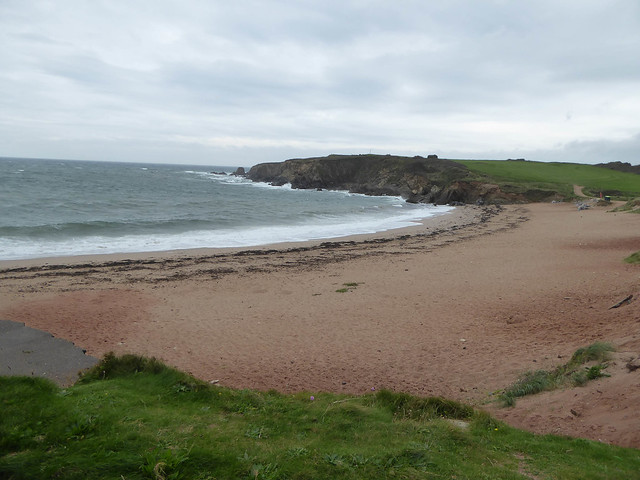
When we reached Leas Foot Sands, we stood and gazed across the water at the elemental scene. A gusty, gale force wind blew from the sea, a powerful natural force affecting everything in its path. It had been hard enough to walk there, buffeted as we were from side to side and, now, above the beach and just about able to stand, we felt specks of sand flick across our faces. The sea was a uniform grey under the overcast sky, but the wind created many white horses offshore and a sense of agitated movement. Chunky waves continually attacked the curving apron of yellowish-brown sand, each one finishing in a foaming mass of white water that mingled with the wind giving the air a moist, salty essence.
At the southern side of the beach, the sand and rocks were coated with a slightly unsavoury looking, brownish foam. I remember being alarmed, some years ago, when I first saw this spume on a beach in Cornwall and feared effects of detergents. I now know that it is a mostly natural phenomenon, caused by a high wind interacting with organic matter from marine phytoplankton.
A few hardy plants grew at the back of the beach beyond the strandline, bringing welcome colour on this mostly monochrome day. Brash yellow and white daisy-like flowers of sea mayweed bobbed in the wind and pale lilac blooms of sea rocket kept safely close to the sand along with their fleshy green leaves. A few pink lollipop flowers of thrift struggled on exposed cliff edges.
Further down the beach, bands of dark seaweed stretched in broad arcs parallel to the shore. The thickest band of seaweed was the result of the morning’s high tide; here the seaweed sparkled, seawater dripping off dark fronds as the tide receded. Mixed with the seaweed were various colourful examples of plastic waste, mostly bits and pieces of fishing tackle or rope, but I also saw an old plastic yoghurt container, a bright green plastic straw and several smaller shards of plastic. A bright pink balloon-like object clung to a flat stone nestling among the damp seaweed. I wondered if this was some kind of joke as it vaguely resembled an inflated condom but I abandoned that idea when, further along, I came across several similar objects. Hazel put me right, telling me that these were Portuguese Men O’War, very colourful but dangerously stinging organisms that float on the sea surface trailing long tentacles, until driven in by high winds. There have been reports of swarms of these colourful creatures on several beaches along the south coast and warnings that the number will increase with storm Ophelia.
Behind the wet strandline was a sparser band of dry, black seaweed, presumably resulting from sporadic higher tides. I started looking around this sector digging up the sand with a garden trowel to see what I could find. This was too much for a woman who had recently arrived on the beach with her child and friend.
“What are you looking for?” she asked me.
“I’m trying to find plastic nurdles, have you heard of them? “ I replied
“Do you mean those small bits of industrial plastic?”
“That’s right, but I can’t find any here” I continued.
“I suppose that’s good” she suggested.
I carried on looking but was unsuccessful. Hazel, however, found six of the lentil-sized plastic pellets, a mixture of grey and blue, on the other side of the beach. Earlier in the year, someone had reported collecting hundreds of plastic nurdles from this beach; perhaps we were unlucky or perhaps conditions had changed.
………………………………………….
Marine plastic pollution is one of the major environmental challenges of our time and something I want to return to in future posts.
……………………………………………….
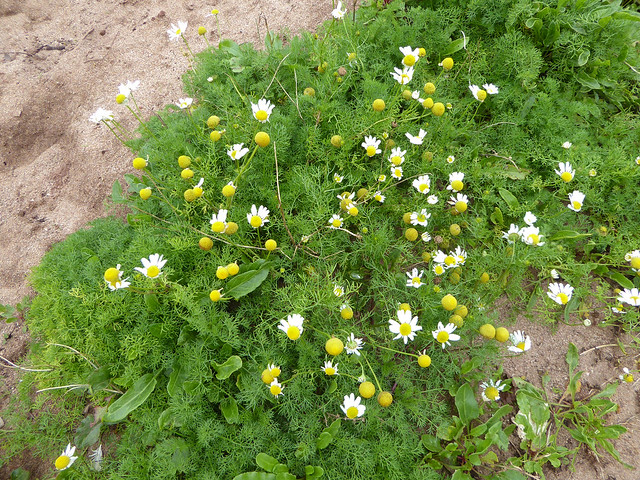
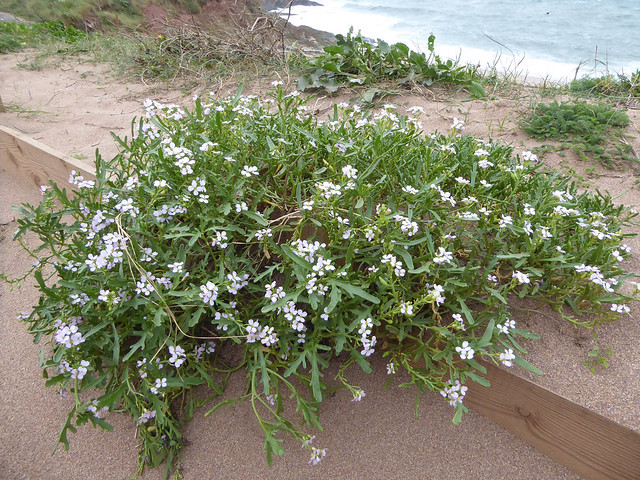
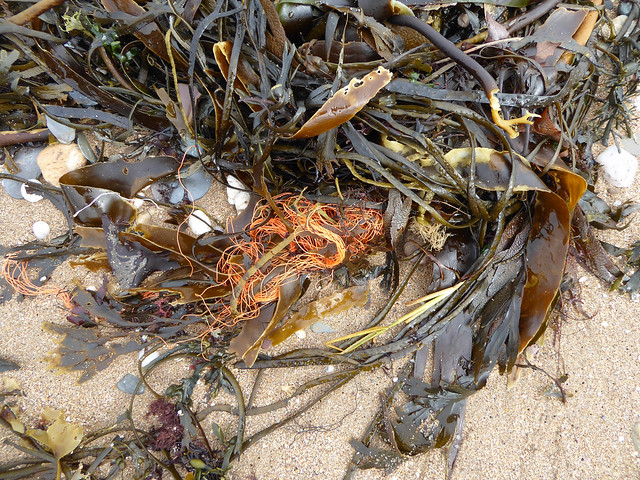
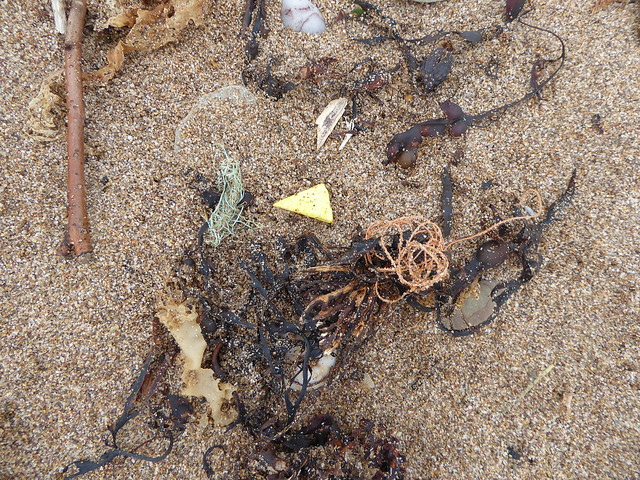

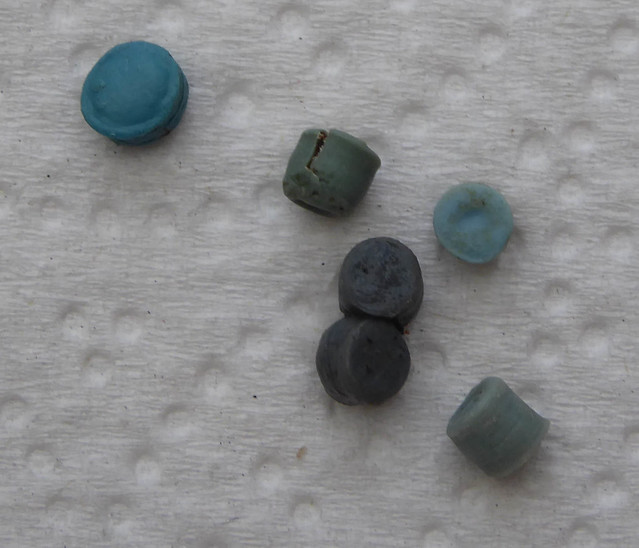
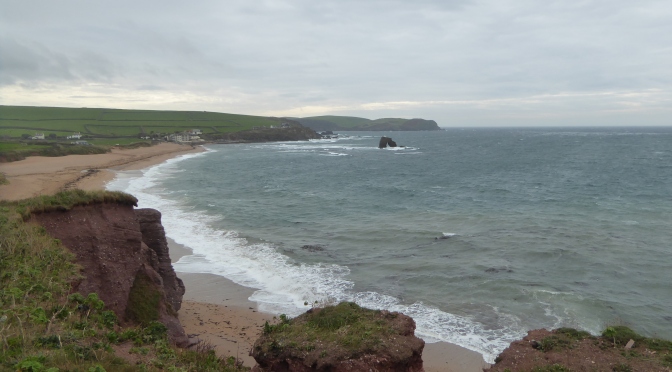

Plastic is so useful light, practically unbreakable, cheap and colourful. I think it has been embraced so quickly for its multitude of useful properties without a glance at any down sides. Amelia
LikeLike
Yes I agree and I have been as guilty as anyone of using throwaway plastic but it feels like we now need to acknowledge and try to deal with the problem.
LikeLiked by 1 person
I must try to write more like you Philip. So poetic and really takes me to the beach. There is a Sherlock Holmes story starring the Portuguese Man O’ War. The local paper keeps saying they’re here in high numbers.
LikeLike
Thanks for your kind words Emily. I dont know the Sherlock Holmes story, the only one I know is the Hound of the Baskervilles which seems to have been set somewhere near here.
LikeLike
I’ve just looked it up and it seems the guilty jellyfish in the story was actually a Lion’s Mane! https://en.m.wikipedia.org/wiki/The_Adventure_of_the_Lion%27s_Mane
LikeLike
As you would expect it has always been possible to find large pieces of plastic abandoned on the beaches here but this is the first year when I seen so much small (almost ground up) plastic that makes me think that this is from much further out to sea and is actually much more worrying.
LikeLike
Thanks Christina, I agree that the very small fragments are the most worrying, I cant imagine what the effects on fish and indirectly on humans might be.
LikeLike
Wonderful photos, and am always interested when wild swimming is mentioned even in passing…
LikeLike
Thanks for your comment. Wild swimming is quite popular down here especially around local landmarks.
LikeLike
PMoW have been washing up in huge quantities – I’ve seen photos of great piles on beaches from far west Cornwall to Chesil Bank. I knew they were to be given a wide berth and that their venomous sting could even be fatal. I’ve only just found out that their stings can remain ‘live’ for hours or days after death; and even in a detached tentacle. Also (less scary) that they are not actually true jellyfish… That mightn’t trouble someone in A&E though.
LikeLike
Yes, PMoW are very much to be avoided. I went back after storm OPhelia (post to go on later today) and found many damaged Men O’War but no evidence of new ones which is probably a relief. Spoke to one dog owner who told me about her dog eating one and being violently sick but survived.
LikeLike
We went to Kimmeridge Marince Centre a few weeks ago. They had a huge glass jar full of nurdles. They told us that many had washed up on our shores when the Napoli sank. I haven’t seen any even though I have been looking. The Men O’War were very strange we kept Tavi well away from them. Sarah x
LikeLike